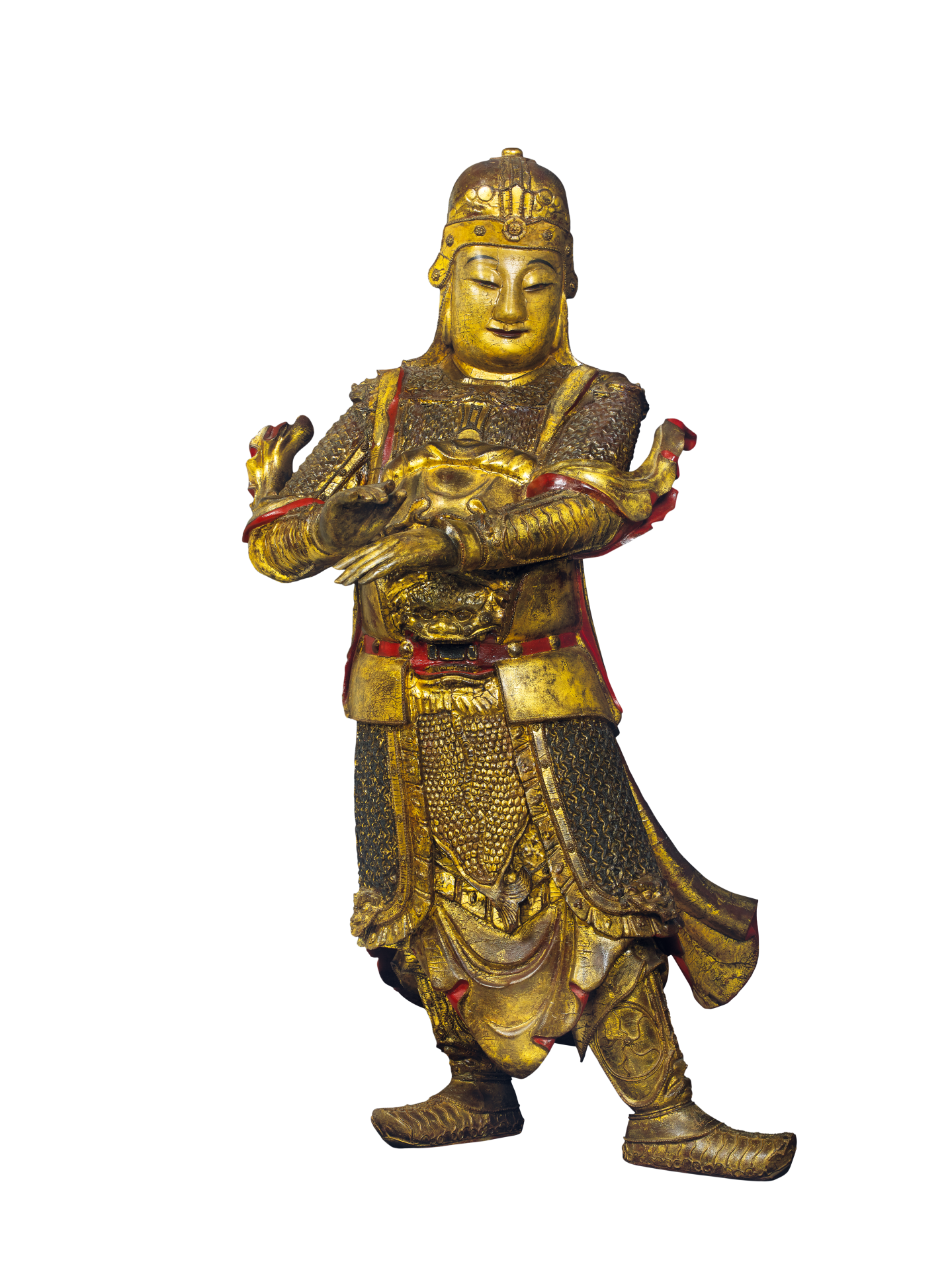Standing Weituo
Skanda, popularly known as Weituo in Chinese, was originally a Hindu god of war born as the son of the Hindu god Śiva and goddess Pārvatī. Around the 5th century he was incorporated into the Mahāyāna pantheon to act as a Dharma protector. His initial image was that of a yakṣa demon. Influenced by the Buddhist legend of General Weituo serving under Virūḍhaka the Heavenly King of the South to protect Buddhism compiled in the early Tang work Daoxuan lushi gantonglu (Record of miraculous communication received by the Vinaya Master Daoxuan), Weituo was given the image of an armour-clad general with palms joined and supporting a vajra across his wrists. Legend also has that he was the leader of the thirty-two guardian generals under the Four Heavenly Kings, responsible for patrolling the eastern, western and southern continents to protect the Buddhist Dharma apart from guarding the monastic community. From the Song and Yuan dynasties (960-1368 CE) onward, it has been a standard layout of the monasteries to place Weituo right behind the shrine of Maitreya Buddha inside the Hall of Heavenly Kings, and facing the Grand Hall that enshrines Śākyamuni Buddha, to protect the monastery.
This wooden standing Weituo statue has an oval face, long narrow eyes, a round nasal tip, well-spaced facial features, and a compassionate and peaceful countenance. He wears a helmet and an armour suit befitting a general of the Ming dynasty. His hands held in front of the belly could have supported an evil-subduing vajra which is now missing.
The lacquered surface is well-preserved. The entire surface of statue was coated with red lacquer before the application of gold paint throughout. Then some details were further highlighted with red lacquer to enhance the majestic and sublime image of Weituo. The figure’s centre of gravity is shifted to the proper right while the head is slightly turned to the left, and the left foot stepping forward in an angle perpendicular to the right foot, creating a beautiful curve pleasing to the eye and adding an elegant aura to the awe-inspiring image of Weituo.
